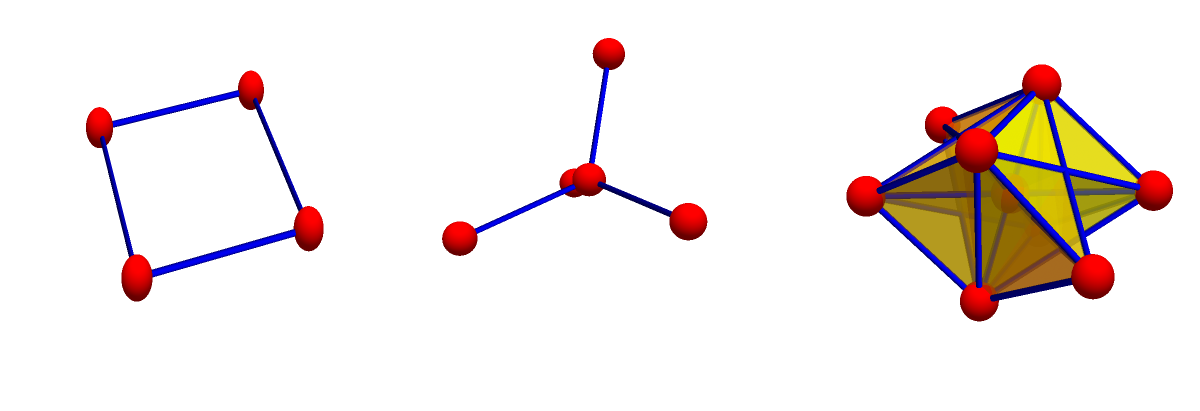What happens with the spectrum of the Laplacian if we add some graphs or simplicial complexes? (I owe this question to An Huang). Here is an example, where we sum a circular graph G=C4 and a star graph H=S4. The Laplace spectrum of G is {4,2,2,0}, the spectrum of H is {5,1,1,1,0}. The spectrum of G+H is {9, 9, 9, 7, 7, 5, 5, 5, 0}.
The largest eigenvalue
In this post just three remarks about the spectrum of sums. The first one deals with the maximal eigenvalue. In some sense, when we look at sums of graphs, we are in an extreme situation, where the maximal eigenvalue is as large as it can be. This is a bit surprising as we would expect that in general the maximal eigenvalue is smaller. But as we see, if the maximal eigenvalue is smaller, then we have an additive prime graph.
|
If |
Proof: If and
, then the vector which is constant
on
and constant
on
is an eigenvector to the Laplacian
with eigenvalue
. The eigenvector is perpendicular to the constant.
Here is a corollary, which can be seen as a result in the ring of graphs as
n G is Kn . G is a multiple of a graph.
|
The graph |
Proof:
The multiplicity follows because we can write the sum in different ways as a sum of two graphs
. The proof above determine then the eigenvector.
The example , where
appears with multiplicity
is an extreme case. An other case is the
-dimensional cross polytop
which has the eigenvalue
with multiplicity
.
I’m confident that there are more relations in general between the spectral of H.K and the spectra of H and K.
The second eigenvalue
Graphs always have the constant eigenvector to the eigenvalue 0. The first interest is the second eigenvalue which has been studied much, both in graph theory as well as differential geometry. It is somehow the ground state as we don’t want to count the zero eigenstate as something interesting. What is interesting is the first eigenvalue gap, which in the case of graphs is measured by the smallest non-zero eigenvalue of the Laplacian.
|
|
Proof: The Courant-Fischer formula tells
Here we see as an example a sequence of graphs H,H+H,H+H+H, H+H+H+H with H=P2. These are 0,1,2,3 – dimensional spheres (cross polytopes) The eigenvalues are {0,0},{4,2,2,0},{6,6,4,4,4,0},{8,8,8,6,6,6,6,0}. Since H+H=C4 we can also write the last 3-sphere as C4+C4 = K2 . C4 = 4 P2.
The volume Laplacian
Here is an other spectral result. It deals with the highest form Laplacian. (See this document for some background.) Let be the Dirac operator of a simplicial complex. The form Laplacian
splits into blocks called form Laplacians
. The nullity of
is the
‘th Betti number
see. We have already seen that if we have two graphs
, then the volume of
is the product of the volumes of
and volumes of
. Lets write
for
for the volume Laplacian, the Laplacian belonging to the largest dimension. Now if
has volume
and
has volume
then we can look at the volume eigenvalues
of
and the volume eigenvalues
of
. What are the volume eigenvalues of
?
|
For two arbitrary networks, the volume eigenvalues of |
Proof: If is the volume Laplacian of
and
is the volume Laplacian of
. Given
and
. The volume Laplacian
of
is a
matrix as the volumes of
and
have multiplied. Define on the facet
of
joining the facets
and
of
and
the value
. Now
.


